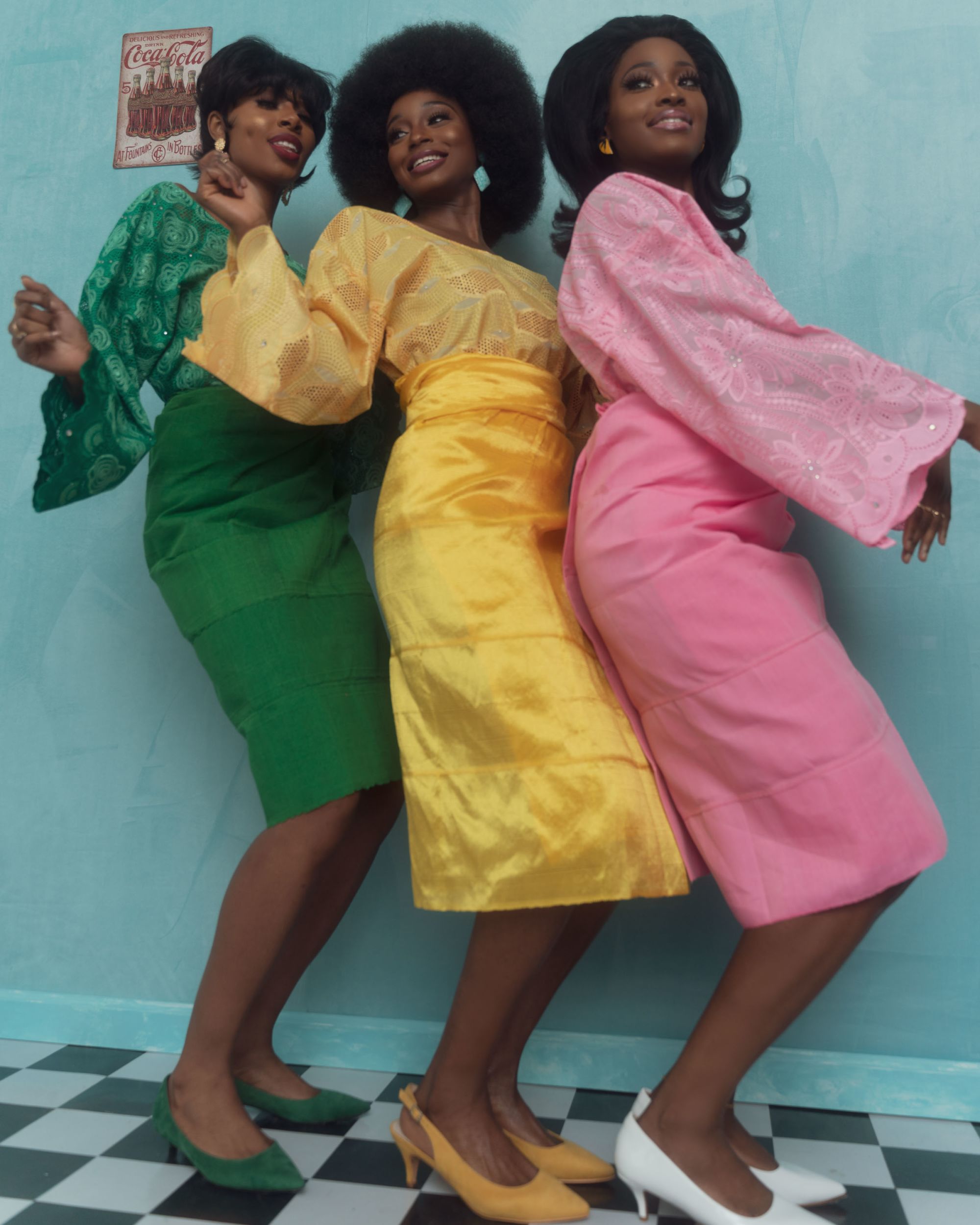For his latest project, Nigerian photographer Oye Diran looked to his old family photos for inspiration. He was especially taken by the elegant clothing his parents used to wear, including his mother in classic Nigerian iro and buba style (a wrapped skirt and tailored top) – often paired with a gele (headwrap).
“I was struck by how appealing and rich these outfits looked and was reminded of how well my parents and their friends were attired when I was young,” Diran wrote over email from where he now lives in New York. “The relevance of iro and buba doesn’t dissipate over time, so I came up with this story to shed light on the beauty of my heritage to the world.”
Diran went on to research more imagery from Nigeria in the 1960s to 1980s, before recreating the same vintage feeling for “A Ti De” (“We Have Arrived”), featuring portraits of three women dancing, posing and having a good time. “Yoruba people are known to find any reason to dress up and celebrate,” he said, referring to Nigeria’s second-largest ethnic group. “Traditional weddings, for example, are an opportunity to wear your finest iro and buba, add accessories, and show out,” he said.
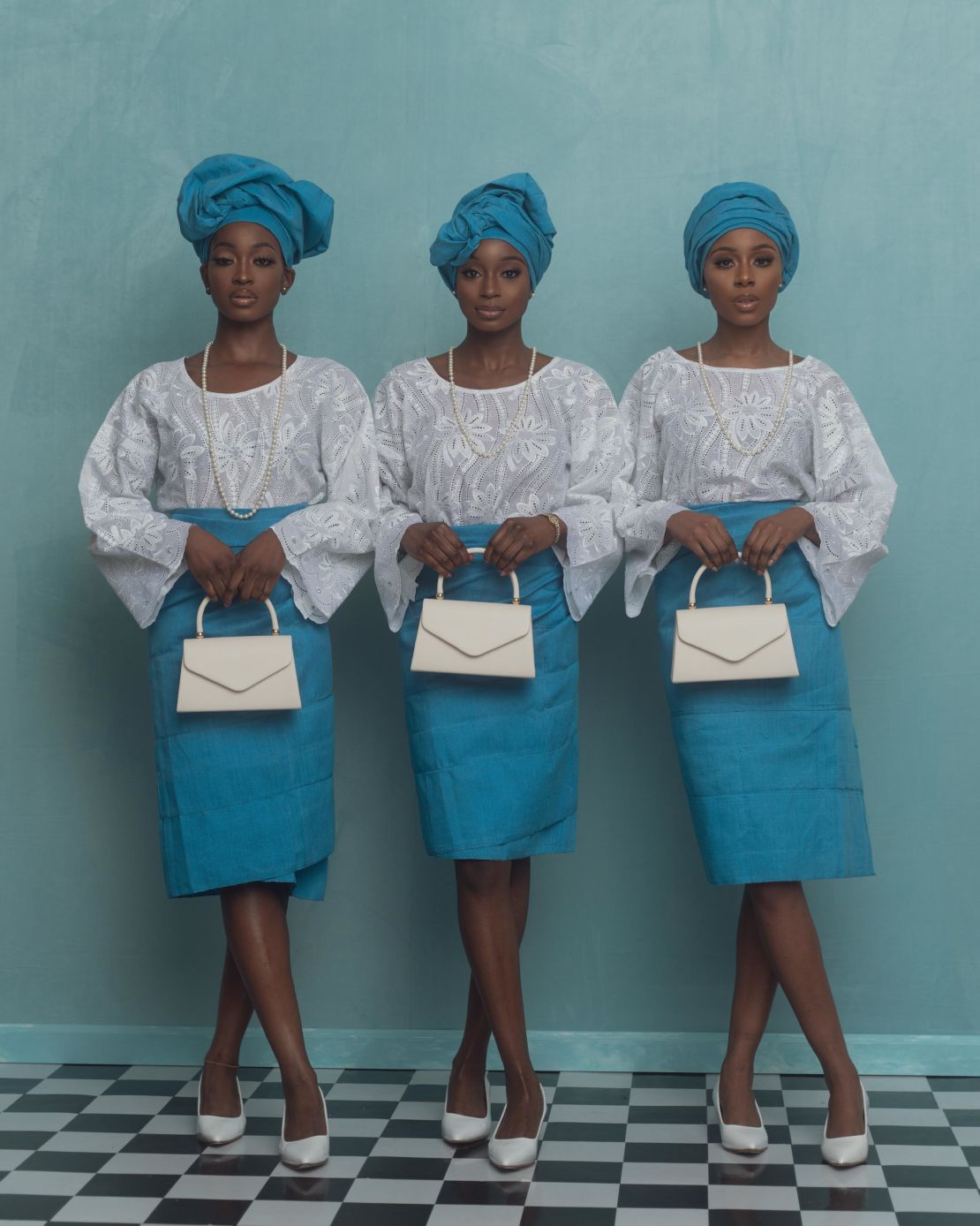
From the optimism that followed independence from Britain in 1960, through a devastating civil war and subsequent military coups, the period that this project draws from was a seismic and formative one for Nigeria. This was reflected in the country’s cultural landscape and ideas around dress. While Fela Kuti incited rebellion and preached pan-Africanism, Lagos’ most stylish residents mixed up local fashion with western silhouettes. This speaks to today’s Nigerian image-makers, who draw on the past to comment on neo-colonialism and redefine black beauty, such as Lakin Ogunbanwo, Ruth Ossai and Diran.

Diran originally studied business and worked in event production before finding his calling as a photographer a decade ago. He taught himself the skill and has gone on to hone a minimalist yet warm aesthetic, citing renowned West African photographers J.D. Okhai Ojeikere, Malick Sidibé and Seydou Ke?ta as influences. “These legends depicted the excellence of their culture. I’m inspired by the set designs, styling and conceptual poses of their portraits.”
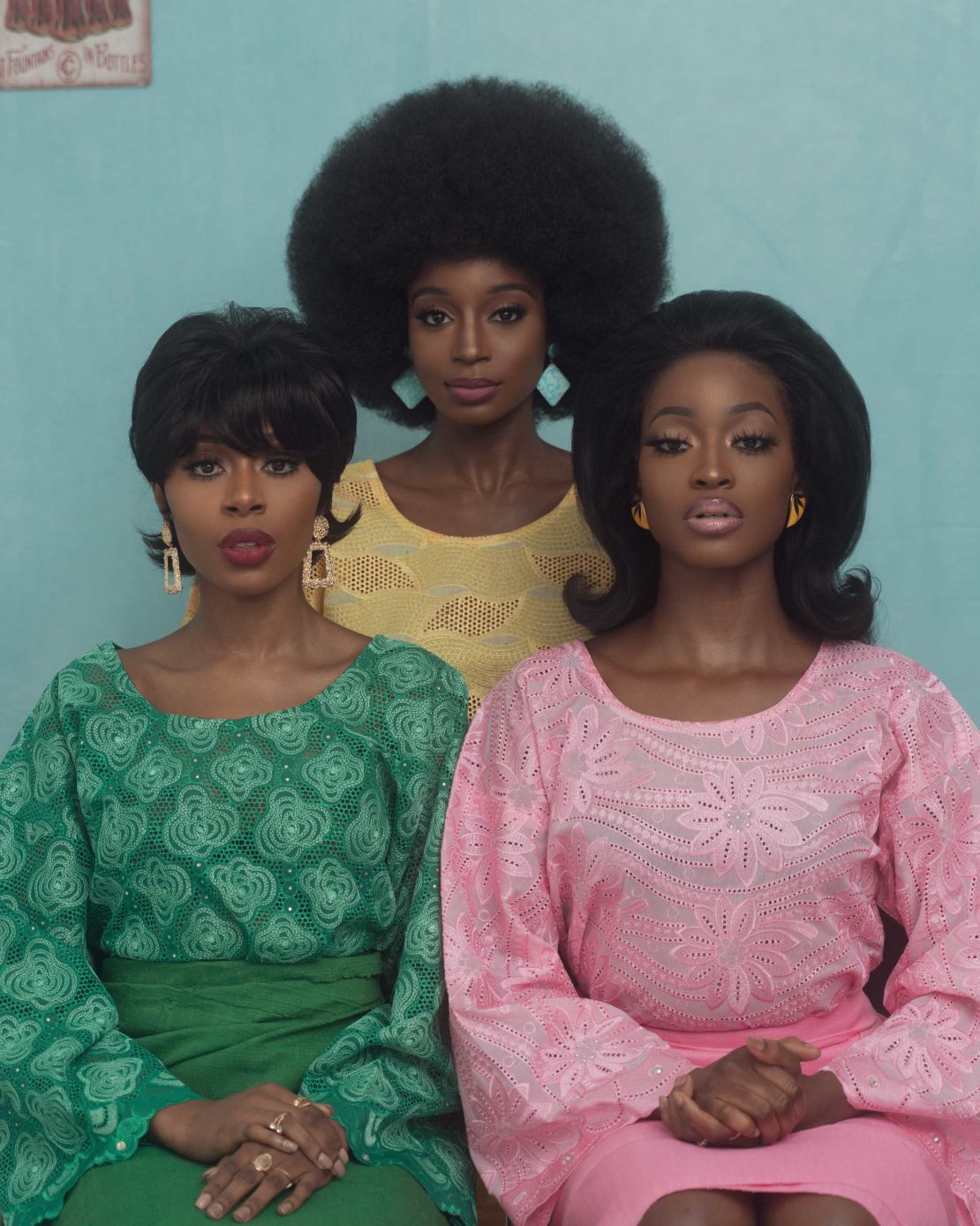
Ojeikere’s celebrated archive documenting the intricate hairstyles and headwear of Nigerian women is echoed not only in “A Ti De,” but Diran’s ongoing series “Gele,” which captures regal matriarchs in opulent settings with elaborately tied headwraps acting as their crowns. “I began the series in 2017 as a way to interpret the symbolic meaning of geles and express the splendour of African women,” he said.
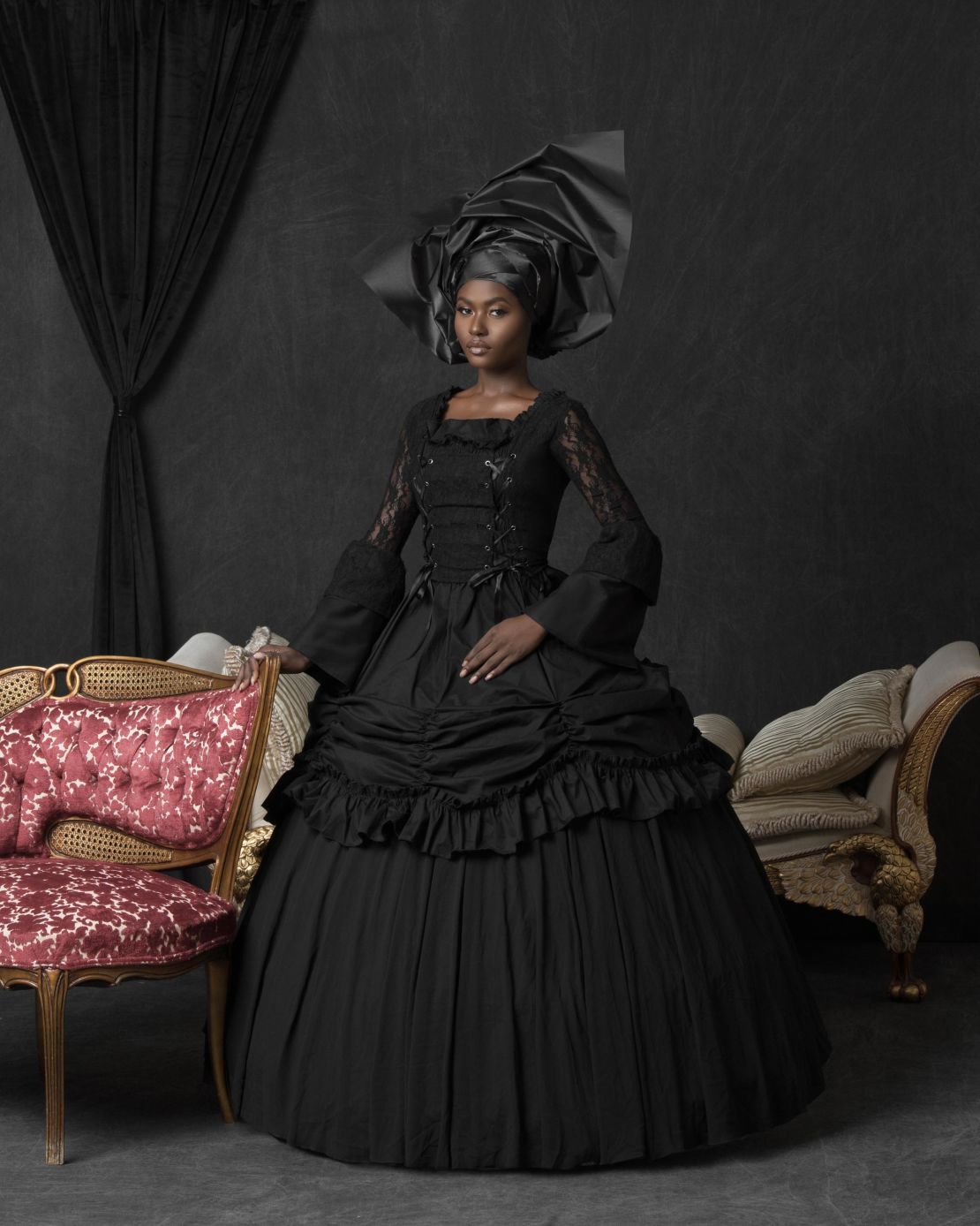
Diran’s fashion and art photos have featured in both Vogue Italia and Afropunk, and his work was included in an exhibition at the United Nations in 2018. This year, his photo “Makub,” featuring a woman’s delicate face and hands in an infinite pastel pink expanse, won a LensCulture Exposure award. “‘Maktub’ is an Arabic word meaning ‘it is written’. It is the idea that our destinies are pre-ordained but still have to be pursued,” he said.
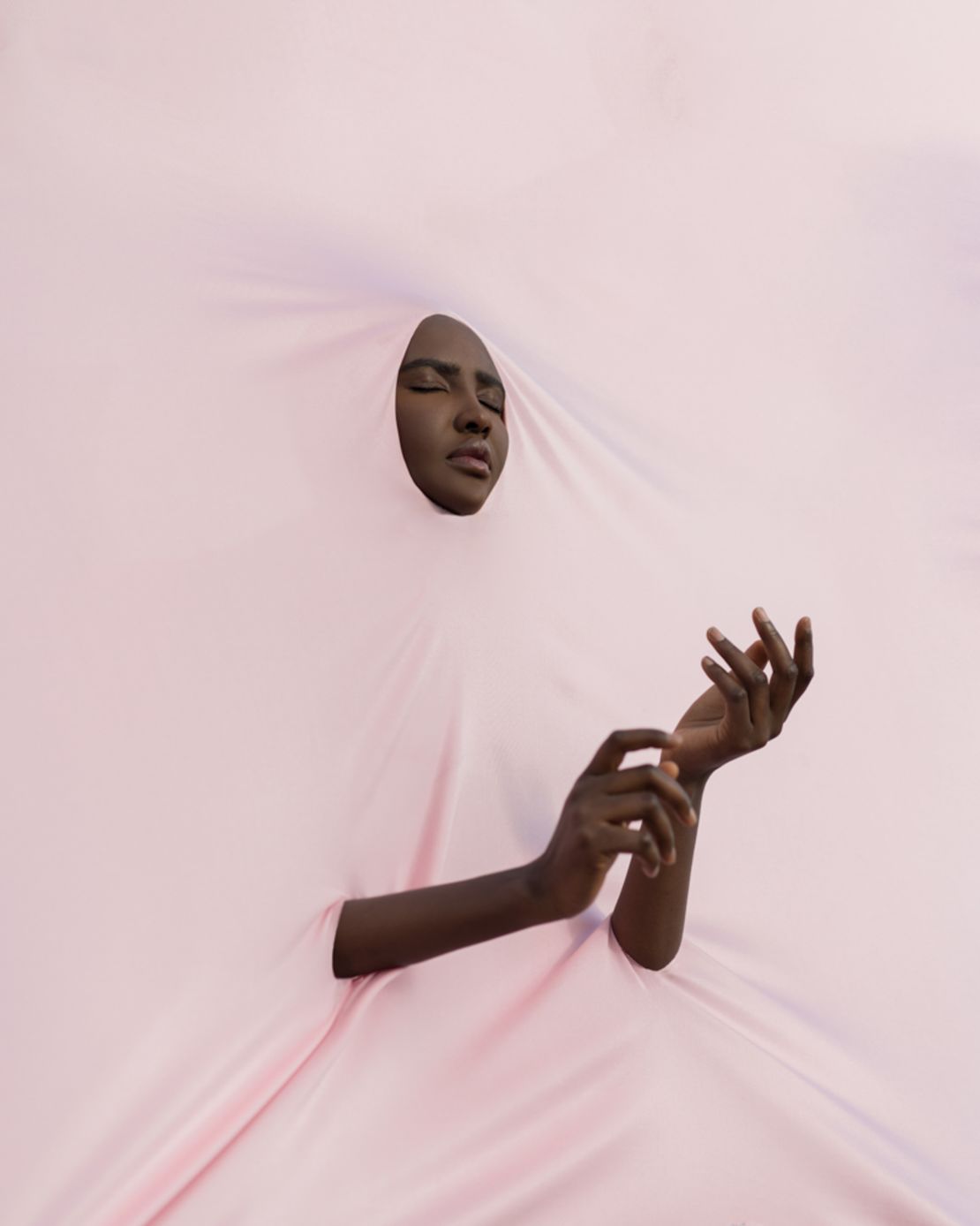
Since it debuted in March on global African media platform Nataal, Diran has received plenty of responses to “A Ti De,” and its nostalgic appeal. “The feedback has been overwhelmingly positive from Nigerians at home and across the diaspora,” he said.
“People have expressed a sense of pride, inspiration and empowerment that the project has given them.” This ties into Diran’s wider sense of duty to create images that speak to a positive, pan-African perspective.
“I want to continue to convey the essence of African or black ideologies while breaking down misconstrued narratives of these cultures,” he said. “I want to be part of the global force illuminating the culture from a diasporic perspective. And most importantly, telling the many truths that are overlooked and more often, silenced. I feel that it is our collective responsibility as African photographers to do so.”
